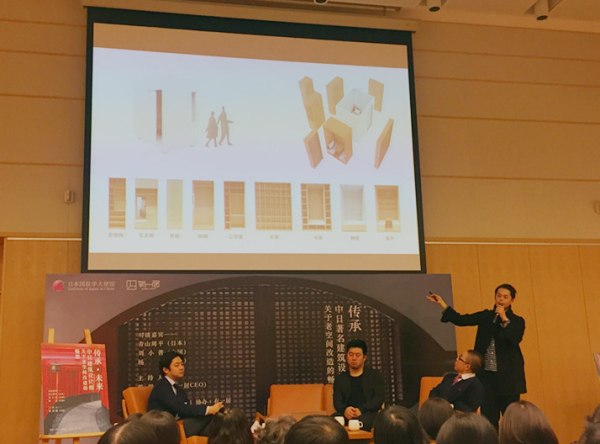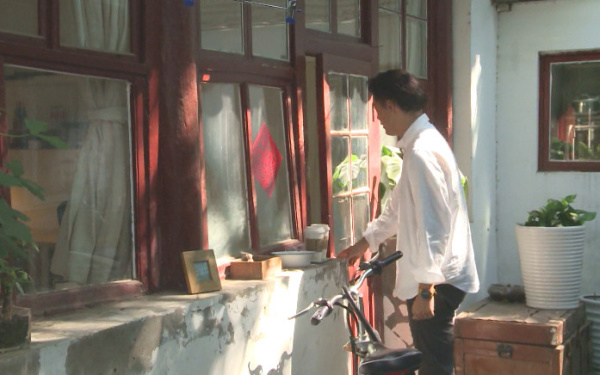Shuhei Aoyama(2L) at a dialogue event held at Japaness Embassy in Beijing (Photo:Ecns.cn/Wang Fan)
(ECNS) -- A bedroom for sleeping, a living room for receiving visitors, a kitchen for cooking and, of course, a bathroom for the basic needs -- these are perhaps humble yet fair necessities for a space called home. But is this meant to be?
During a dialogue held at the Japanese Embassy in Beijing this weekend, designer Shuhei Aoyama brought the question forward.
The event drew three architects from China and Japan together in exploring the tradition and future of old neighborhoods in modern cities.
Many Chinese got to know Aoyama via a TV show last year, in which he turned a less-than-10-square-meter shabby house in Beijing's hutong into a full-functioned stylish modern home for five people.
When it comes to future homes, Aoyama packs some philosophical thinking on modern life into the design process.
"We've been so used to standard bedroom-living room type of apartments, especially in big cities, but there should be other ways of living," he explained while talking about one of his latest projects.
His answer to future homes is reflected in "400 Box Community", a futuristic projection based on a sharing community that blurs private and public spaces.
As planned, there will be 400 boxes in the community. Each will be equipped with a bed, a toilet and storage space, and designed for one person to live a private life. The boxes are placed on wheels so that the occupants can drag them freely around the community. There are also movable modelues of studies, bookshelves and closets to expand the function of the boxes.
All space outside the boxes is public, where community members can engage in cooking, chatting, playing, or even having a small concert.
Key to the plan is sharing part of the functions of a home with neighbors, Aoyama said, adding that his inspiration came from 10 years living in Beijing's Hutong areas.

Idea from the old days
Moving to Beijing in 2005, Aoyama now lives in a 40-square-meter house in an old neighborhood in the heart of the city.
It's not a well-equipped one, but Aoyama said his life wasn't bad at all. "I don't need a fridge, because I can buy fresh food at a market just a few minutes walk away; I don't need a study, because I can work on my project at a quiet cafe down the alley; I don't need a living room, because I can walk into a bar or eatery in the area to meet old friends and make new ones."
"This high level of involvement and interaction is something unique in the Hutong neighborhood and that fascinates me," he explained.

He observed how his neighbors live their lives and deal with public space as well.
In the pictures he showed the audience were old furniture and other stuff people abandoned in the courtyard. Some of these objects were eventually made other use of.
"Once I saw a topless man standing in the alley. At first, I wondered why he didn't feel uncomfortable without clothes on in a public space. It later came to me that he didn't take the alley as some 'outside' space at all."
Needs for modern society
The blur of boundaries and spirit of sharing is what Aoyama learned about Hutong life and he wanted to highlight the idea in "400 Box Community".
Aoyama said the project was also based on considerations for an increasingly smaller family structure in modern societies.
"Do people really need to spend their savings on rooms that they seldom used?"Aoyama asked when refering to the high prices for a house in big cities like Beijing.
Despite the project being intended for a single population, Aoyama said the point is not only to offer people another option, but to revolutionize the idea of home and neighbor relations for the whole society.
"This is a plan for the future, though we sought the answer from the old day. Perhaps there's no clear division between tradition and future," he added.


















































